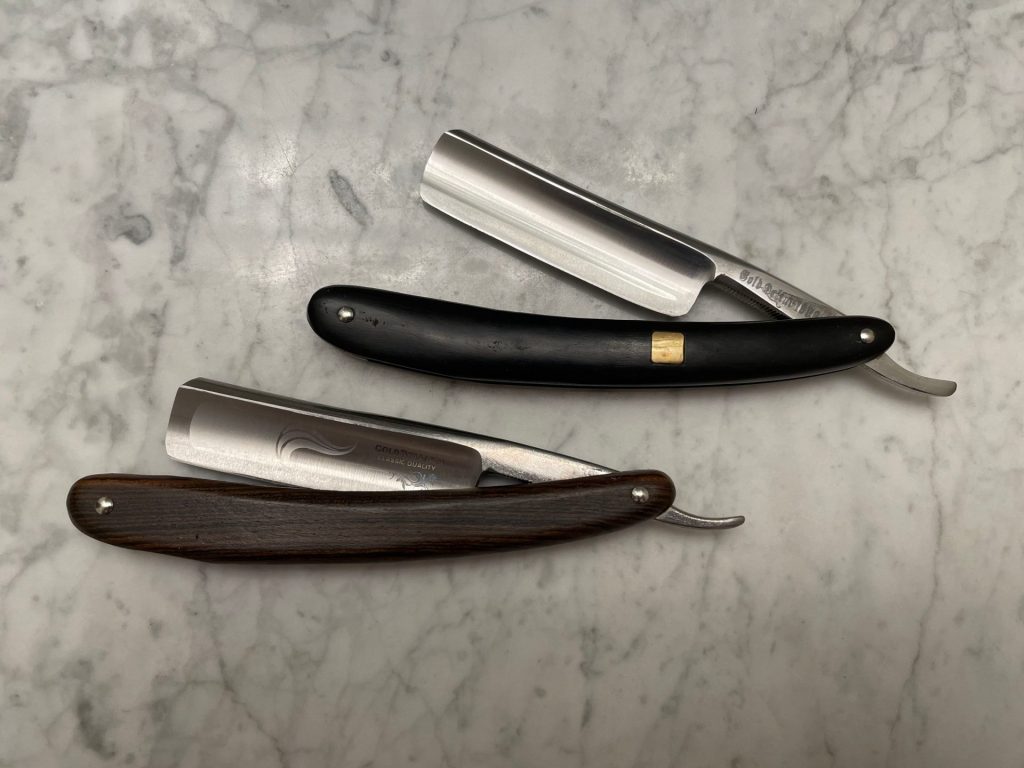
“If a line of poetry strays into my memory, my skin bristles so that the razor ceases to act.” ~A.E. Housman
This post is going to be radically different from everything else I’ve ever published so far in this blog, but since my designation is officially “eclectic,” I’m finally taking the license I wanted to from the start.
No, this post won’t be about caring for outdoor gear, hunting, fishing, or some gear review. This will be a little bit different. But it will, in a sense, be about self reliance.
This post will be about why you should shave with a straight razor.
If you have never tried before, it’s high time. There’s no reason not to. Someone in your lineage once mastered the skill (if you go back far enough, and if I were a betting man, I’d bet you don’t even need to go back that far) and there’s no reason you shouldn’t.
With that said, who should learn to shave with a straight razor? Well, anyone that shaves.
If you shave, that’s you.
So let’s get right into it.
You Get a Better Shave
What better reason can you possibly ask for than this one? I have shaven with cartridge razors, I spent a few years shaving with safety razors, and then I graduated to straight razors. Of the three, a straight razor gives the finest, closest shave, bar none, no exceptions, full stop.
Granted, it does take a steady hand and some knowledge of the dynamics between your beard and the blade, but once you get used to how to handle and use a straight razor, you’ll be wondering how you ever lived life before one.
It gives a closer, finer, smoother shave, and it does all this with one blade. Forget the gimmicks and the shameless commercials showing promiscuous women throwing themselves at male models who seem to (but probably don’t) shave with Gillette cartridge razors.
That is not the best a man can get. The best a man can get is some experience, a fine edge, and a straight razor.
By the way, not only does a straight razor give a better shave, but so far, I’ve been noticing that I cut my face and neck substantially less with a straight razor than I used to with a safety razor.
That could be because I’m more inclined to take my time with a straight razor, but it also happens to be true. Either way, I’ll trade the expense and irritation of a safety razor (or cartridge razor) for the finer shave and fewer nicks of a straight razor.
No More Ingrown Hairs
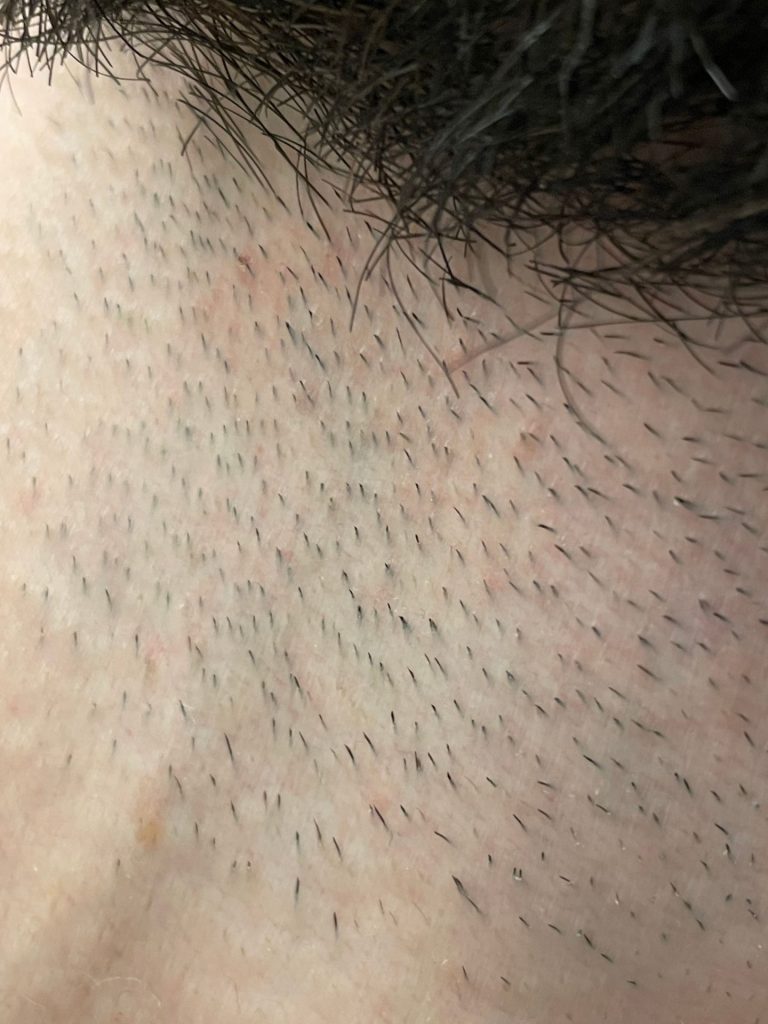
This problem isn’t one that’s quite a problem for those that use a safety razor, but ingrown hairs are a problem for those that shave with multi-blade cartridge razors – and the reason is simple.
Cartridge razors possess multiple blades. As each blade passes over your stubble, it gets progressively closer and closer. At a certain point, your stubble is so short that the first blade that contacts it doesn’t cut it cleanly; it simply tugs on it, pulls it up a little, and lets the following blade cut it at a point that, at rest, is beneath the surface of your skin.
Basically, the multi-blade design enables you to get an artificially close shave that crops hair to beneath the level of the skin. Sounds desirable, but it isn’t, cause when the hair starts growing back in, it’s usually ingrown and can get infected.
Straight razors, which have but one blade, cannot execute this maneuver. They can only cut your beard flush to the surface of your skin, and no closer. But honestly, that’s as close as you need anyway.
Now, the problem here is bigger than this. Not only is the cartridge razor creating a problem through its inferior design that causes ingrown hairs, but you are now giving license to these audacious manufacturers to treat an illness they intentionally spread, with aftershaves and soothing lotions.
How bout you pull up the weed by the root, and kick the cartridge razor to the curb. Ingrown hairs will follow in their egress. Trust me.
It’s Better for Sensitive Skin; No More Razor Burn
Granted, not everyone will automatically experience ingrown hairs with a straight razor. But some of you will experience razor burn, which is basically the same issue, just not as magnified.
As a cartridge razor, with multiple blades, passes over your skin, it not only cuts your stubble, but strips away oils from your skin and shaves up a fine layer of your epidermis in the process.
With one pass, it’s usually not much more than a gentle exfoliation. After a few passes, you’re cutting it pretty close.
For most people, especially those with sensitive skin, the end result is razor burn and irritation.
Now, the same condition will apply with a straight razor, but for the most part, I make two passes and I’m done.
If I make two passes with a razor with 3 blades, that’s equivalent to making 6 passes with a straight razor. See where I’m going with this?
Just trust me, and if you don’t, try it for yourself. You’ll see I’m right. Straight razors produce less irritation.
You Have Greater Control with a Straight Razor
When you shave with a straight razor, there is so much more flexibility with respect to how the blade contacts your face, and that makes a huge difference in the quality of the shave. It also, as I have observed, makes a big difference in whether or not you cut your face.
You see, when you shave with a safety razor or even a cartridge razor, the blade is fixed in its housing at one specific angle. That quality, itself, makes it impossible for you to contact your skin outside of a very narrow range of angles.
It’s impossible to go shallower than the angle created by the housing and the blade, because at that point you’re just pressing the cartridge or razor head into your skin. On the other hand, if you want to contact your skin at a more oblique angle, there’s also nothing you can do. Trying to raise the angle just pulls the blades away from your face.
And so you’re stuck – which is a bad thing, because the grain of your hair should dictate the angle at which the blade contacts your face.
As a general rule, an angle of 30° is ideal, for a straight razor or otherwise. Any shallower, and you won’t get a close shave, any more obtuse, and you’re liable to cut yourself.
But the thing is, there is some variance to consider here. For instance, shaving against the grain warrants a shallower angle, and shaving with it, a more oblique one. There are points at which, when I’m trimming with the grain, I use an angle closer to 40° or even 50°. The fact of the matter is you just can’t do that with a cartridge razor or even a safety razor – but with a straight razor, you can contact your skin at any angle you so choose.
A Straight Razor Can Reach Areas That a Safety Razor Cannot
Because of the unique nature of a straight razor’s blade, you also have a great deal more flexibility with getting at those hard to reach places – cartridge razors and safety razors just can’t do it.
For instance, getting close up under the area underneath your nose – straight razors excel at this, and cartridge and safety razors just can’t cut it – figuratively and literally.
It’s also hard to get at the area just under and nearly behind your ears. But the point of a straight razor makes it a cinch to shave these areas.
In fact, some straight razors, specifically Spanish-style razors which have a sharper point, are ideal for detail work.
You’ll Save a Ton of Money
Now let’s get to the meat and potatoes of this argument. Let’s just say every single thing I’ve said so far in this post is truly moot. Let’s just say that straight razors give you a comparable shave to cartridge and safety razors, but that in all other ways, they’re identical at best.
Then comes this argument: you will save a ton of money shaving with a straight razor. So much it makes my head spin.
Let’s just say you pay a dollar for each cartridge, and burn one a month. After a year, that’s 12 dollars. After two, it’s 24.
If you buy one of the Gold Dollars I’m going to recommend below, it won’t even take you two years to break even. And, a quality straight razor, so long as you take care of it, will last the rest of your life.
But my estimate is laughably conservative. There are cartridges out there that cost 5 dollars a pop, and sometimes even more. Even if you go through only 6 per year (and some guys burn through far more than that, it’s still 30 dollars a year.
Now, don’t get me wrong. I am well aware that straight razors can be very expensive. I know there are straight razors out there that cost several hundred dollars, even more than a thousand.
But the truth is also that it doesn’t quite need to be this prohibitively expensive. There are affordable options, and they will last forever.
There are no cartridge razors or even safety razor blades that last forever. If you’re truly good with a blade, you can re-hone your safety razor blades, but most people don’t.
And the truth is also that you will never need to replace anything on a straight razor.
So, take your pick. Buy it once and use it for life, or suck yourself into a predatory scheme that forces you to buy more of things that exhibit planned obsolescence. I’ve made my choice.
An Investment in a Quality Straight Razor is an Investment in an Heirloom
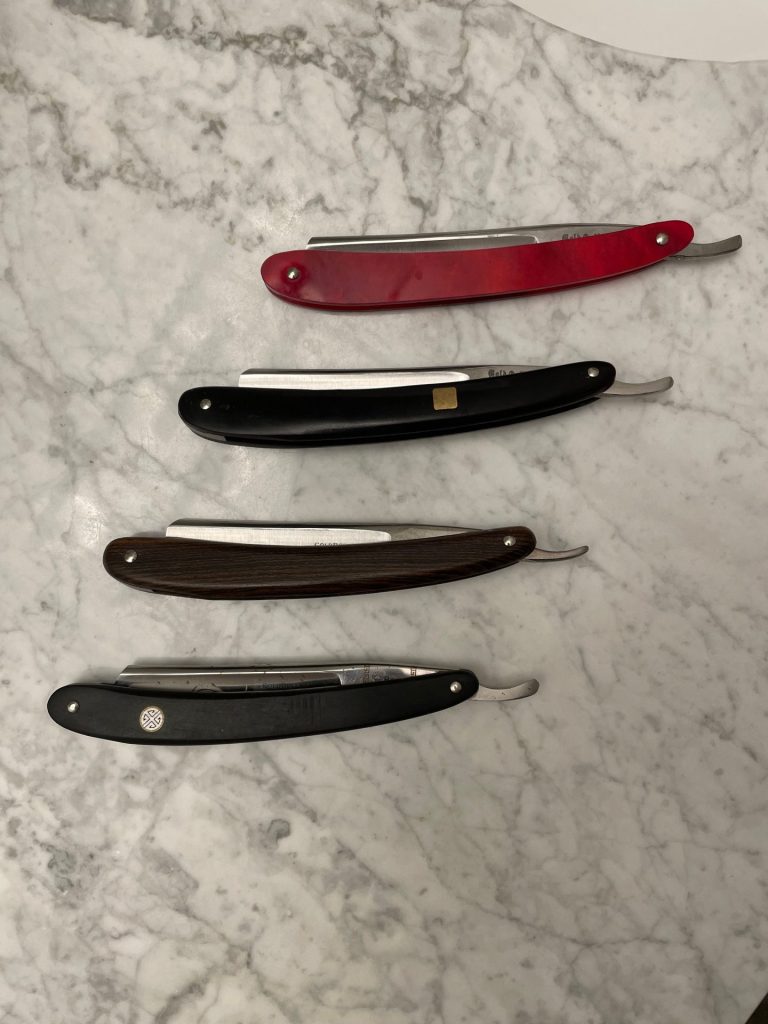
There are hand-forged, hand-fitted straight razors on the market today from Thiers-Issard and Boker (and Dovo) that are true works of art, with gold-tone and silver-tone contrast, beautiful etching, and bespoke scales.
Some of them are adorned with real tortoiseshell, ebony, ram’s horn, ivory, and bone. Some also are made with stag horn, I believe.
I have none of these because my razors are naked implements of function. I simply don’t want to put money like that into those razors. But you could, if that’s your sort of thing, and they won’t lose value.
If anything, they will appreciate, and if you take care of them, you will have an heirloom that someday you will be able to hand down.
Straight Razors Are Easier to Maintain
This one I actually went back and added in as an afterthought, but it seems so apparent I couldn’t look the other way.
Have you ever tried to unclog all your stubble and soap scum from between the blades of a safety razor, or worse, from a cartridge razor? God forbid you’ve ever tried to clean out the blades of an electric razor. It is a course in madness.
I have done it and I wish never to do it again. Blade guards and electric razors trap hair, oil, and soap residue, dulling the blades, corroding the tool, and serving as a breeding ground for pathogens that can cause skin irritation and infections. Moreover, electric razors burn out.
Not one single one of these concerns will ever assail you once you switch to a straight razor. There is no motor to break and there are no moving parts to break, wear, or fail.
There are not multiple blades, and there are no guards to strap stubble and soap. It is easy as pie to clean off a straight razor by rinsing it in water. It’s not only inherently cleaner, it’s also easier to keep clean, and that instance is the one rare one in which the straight razor actually has the edge of other razors in terms of convenience.
What you don’t earn in convenience while shaving, you earn back in maintenance.
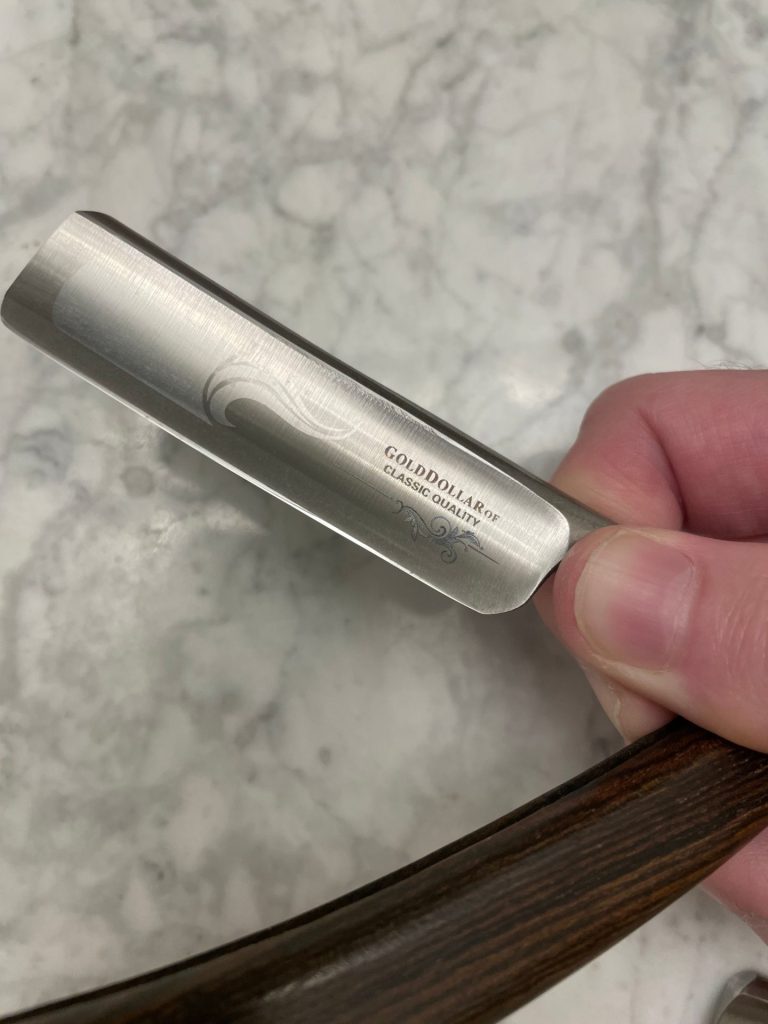
You’ll Become More Proficient at Sharpening and Handling Edged Tools
You cannot shave with a straight razor without becoming more proficient in the use, and sharpening, of a bladed tool.
For one, you need a very sure hand. Learning to shave with a straight razor will also give you an innate sense of how sharp something needs to be to cleanly cut through something. You can feel when the razor is sharp enough to cut your hair, and when it just tugs it, which is quite an unpleasant experience.
You will learn about angles of contact, and how much force to apply, without drawing the blade.
You will also need to learn how to put a truly sharp edge on a tool. Believe me, there is sharp, and then there is razor sharp. I was decent at sharpening knives before I started shaving with a straight razor, but since I took them up, my perspective has shifted substantially.
I have become more patient and more intolerant of tools that are simply “sharp enough,” instead of truly sharp.
They’re all soft skills I picked up by the wayside, and if you start shaving with a straight razor, you will too.
It’s More Economically and Environmentally Tenable
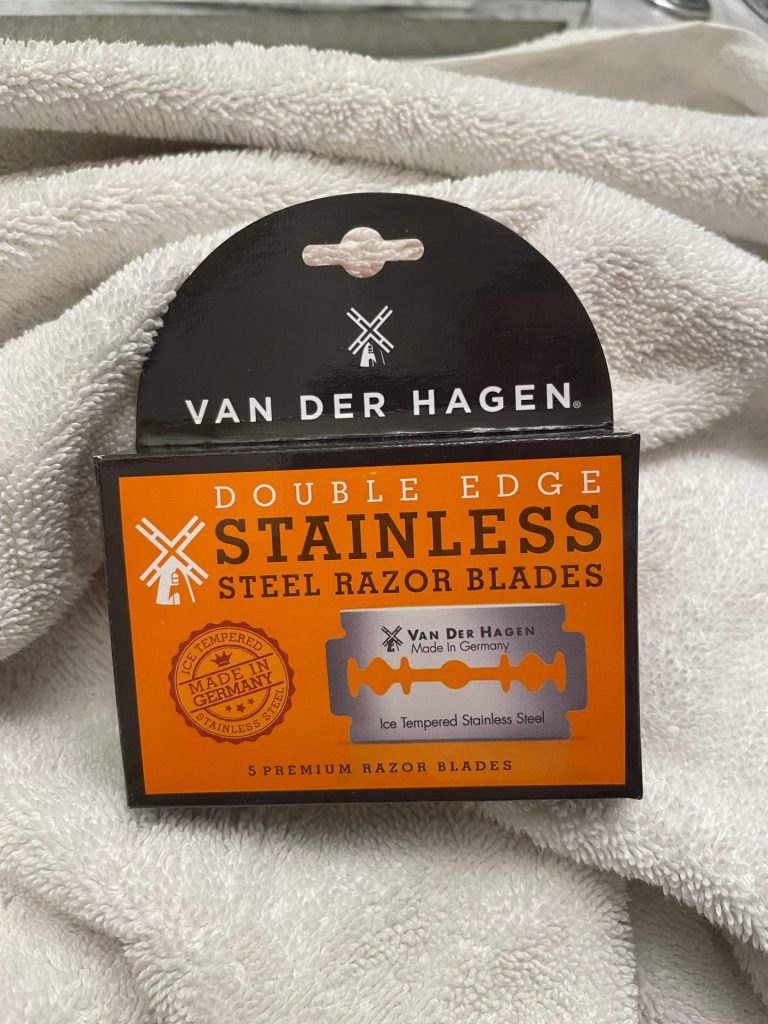
Suppose you don’t care about the expense of shaving with a cartridge razor, or you even prefer the convenience of the shave. For some people, these factors are probably legitimate.
But what about the waste? You must have to turn a completely blind eye to that. We’re talking about tons upon tons of execrable waste in the form of wasted, spent, dulled-out cartridges and safety razor blades that are effectively impossible to recycle and which are just a step shy of a biohazard anyway.
I guess for some people this is a nonissue, but for me, it just seems ugly. I hate waste in general, and consider it ignoble, selfish, and derisive of self reliance. If I have so much I can afford to waste, I either have too much or I am not properly respecting what I do have.
And so I will not.
It’s a Purely Enjoyable Ritual
One might say without the least shadow of hyperbole that shaving with a straight razor is a truly zen ritual.
Despite the fact that shaving with a straight razor requires your full, intense attention and a steady, sure hand, it is somehow nearly hypnotic.
The grace with which the blade cleaves a thick stubble, effortlessly, almost, is a thing of beauty. It takes an artfully honed and stropped blade to do so, and there is something mesmerizing in the act.
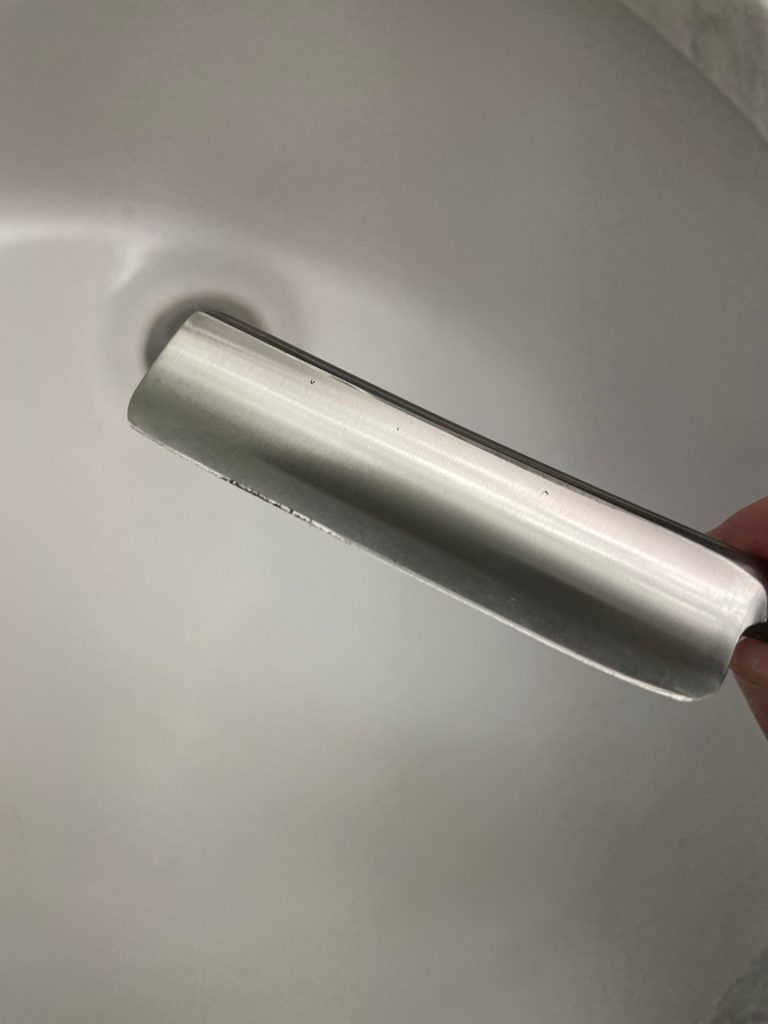
It also takes a good deal of skill and it is difficult not to wax proud at the prospect of a deftly executed shave and a smooth face.
Moreover, shaving with a straight razor requires you to lubricate your beard with high-quality shaving cream. You can’t “dry shave” with a straight razor (you will regret it) and you can’t use those cheap off-the-shelf “shaving creams” that are mostly whipped water with a bit of soap. They won’t cut it.
You’ll need something formulated for wet lubricity, like from Cremo or the Art of Shaving.
The reason I bring this up, though, is that these high-quality shaving creams are made with delicate balances of essential oils that produce a sensory experience unique from the shaving itself, and that part is enjoyable too.
It’s Badass
What can I say. This is self-explanatory.
Apparently, It Benefits Your Brain:
For this final argument, I will draw on the expertise of others that have published on this topic before me, standing, as Newton did, on the shoulders of giants.
With that said, apparently learning to shave with a straight razor makes your brain sharper because there are so many new things you need to learn about it.
All of these unique aspects, for instance, learning to build the perfect lather and apply it, learning how to hold the straight razor, how to hone and strop it, and so on and so forth, exercises both hemispheres of your brain and is good for cognitive development.
Anyway, don’t take the argument up with me. You can consult the original source of the claim via the previous link.
And it’s a pretty cool fact, if you ask me.
What You Need If You Want to Get Started Shaving with a Straight Razor
Supposing you’ve hung on thus far with me, and I’ve sufficiently captured your interest to the point that you’re seriously thinking about this venture, I guess I should tell you what you need if you’re going to start shaving with a straight razor, right?
Well, start with the following.
A Straight Razor with a Shave-Ready Edge

I’m just going to be completely honest here. Thar be a shit load of “straight razors” with “shave-ready edges” that are not only hardly straight razors but which most certainly do not have shave-ready edges, all poetic license aside. I believe the shaving community calls them RSOs, or “razor-shaped objects.”
Do not waste your time or your money. I can make a few recommendations but beyond that I suggest you stick with a well-established brand or visit a shave shop and get a personalized recommendation. It’s better than wasting your time, your money, and the being disappointed in the end because you can’t shave with what you bought anyway.
The truth is you need a certain grade of steel with the right bevel in order to shave with a straight razor. It doesn’t need to be hollow-ground (though many razors are); there are flat ground razors; but it needs to be nearly perfect.
Even the most minor imperfection in the edge or the grind will make it impossible to shave with, and let me tell you from experience (I’ve tried to shave with RSOs) and it is not fun. You pul the hair, you cut your face, and you end up with basically no shave at the end of it.

The only brand with which I have a good deal of experience is Gold Dollar. I have read on forums that they are seriously hit or miss but there are some that I know come with decent edges that need only a bit of a touch up and a stropping from me before I can shave with them.
Some I recommend are as follows:
Unfortunately, because these are cheap Chinese razors, I can’t be more descriptive than that, because they don’t appear to have proper product nomenclature. What I can say is that I have used all three of these and they all come with passable edges that, with a little touching up, can be worked into a truly shave-ready state, and when stropped, will produce a good shave.
Hot Water
You need hot water to shave with a straight razor, as hot as your skin can stand it. Truth be told, I boil water before decanting it into my scuttle. It’s a bit rough when you first brush it on, but it cools quickly enough.
Besides, it’s not like you’re actually putting boiling water on your face. You need to pour it out and whip up a lather.
Speaking of which…
A Bowl (I Suggest a Scuttle)

You need a bowl to use as a vessel for your lather, as well as for creating your lather in the first place.
You can buy concrete or stone bowls that are somewhat well-insulated, and you can also buy metal bowls. As a general rule, unless they are double-walled, I would avoid them because metal sheds heat too quickly to be useful as a shaving bowl.
I prefer (and use) a special type of shaving bowl known as a scuttle, and my scuttle contains an inner recess into which I pour hot (nearly boiling) water before I shave.
This is better than conventional insulation – the recess that holds the hot water is actually keeping the water in the bowl hot.
This is, in my experience, the best bowl to use for shaving as it keeps the lather hotter for longer, and you absolutely need a hot lather to get a good shave with a straight razor.
A Brush
There are two natural materials from which shaving brushes have traditionally been made. Badger and boar bristles.
Badger brushes are more expensive, but the hair is softer, more absorbent, and can be used to create both very loose and very stiff lathers. It’s also a lot more gentle on your skin.
By contrast, boar bristle brushes are dirt cheap. That said, they are much stiffer and coarser than badger brushes, and they are not as absorbent. SInce they are not as absorbent, they’re not as good at whipping up a foamy lather. However, the one advantage of boar bristle brushes is that they’re good at exfoliating your face.
I have both badger and boar bristle brushes, and though I don’t want to formally recommend one over the other, I do prefer badger most of the time. I advise you to get one (or several) of each..
There is a third class of shaving brushes, which have synthetic bristles. My experience is limited, and not positive. Use at your own risk; I do not recommend.
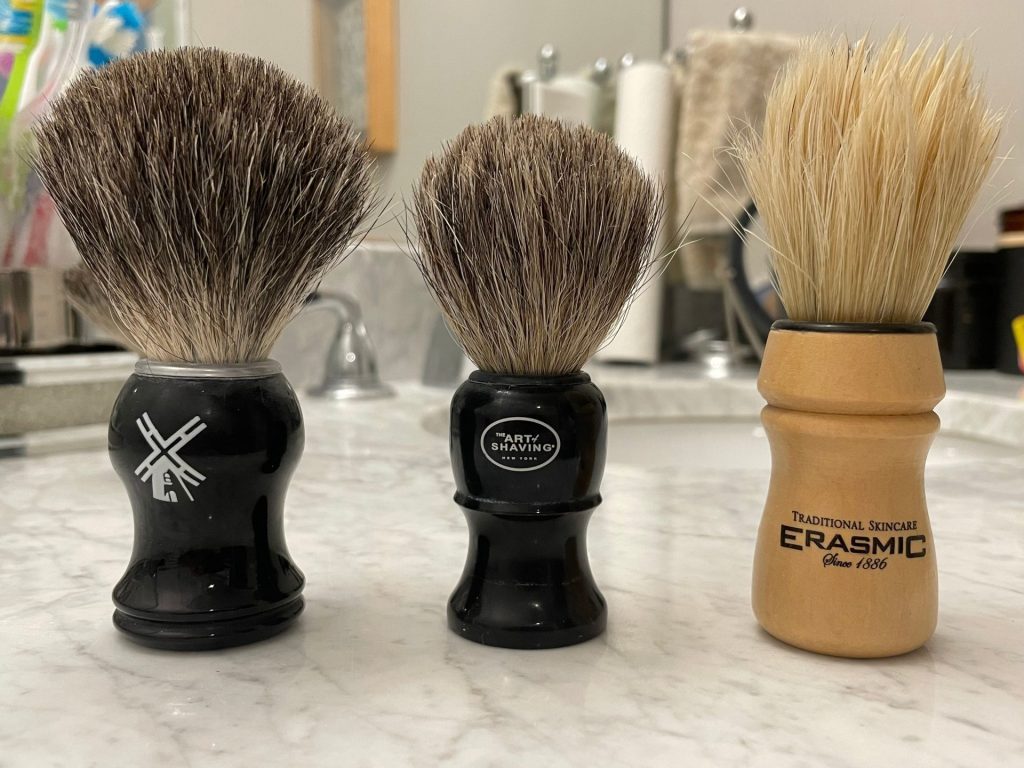
Shaving Cream or Soap
You can get away with a quick dry shave with a cartridge razor (meaning with warm water but without soap or shaving cream) but that’s not something you can do with a straight razor. You will cut your face.
Instead, I recommend a quality shaving cream or a shaving soap. If you’re going with a soap, I recommend Proraso or Art of Shaving. Both of these produce a nice lather and will lubricate your skin properly.
If you’re going with a shaving cream, I generally advise against buying whatever is on the shelf at the local store. Those cheap creams and foams don’t properly lubricate the skin. You’ll want something like Cremo’s shaving cream or one from the Art of Shaving.
I do hate to be a brand loyalist because I believe in quality instead of mystique, but in this instance, the quality is there.
I have used cheap shaving creams and they don’t provide an adequate lather. The ones I mentioned will.
A Strop

Straight razors, unlike some edged tools, need not only to be honed but stropped. If your razor is properly sharpened, you can get away without having a stone for it for a long time. You cannot get away without having a strop.
A strop is a piece of material, usually leather, that is used to align the microserrations on the edge of the blade, making them truly shave-ready.
It doesn’t remove material from the edge, all it does it align the microscopic “teeth” so that it shaves smoothly. Depending on how sharp your razor is to begin with, how coarse your beard is, and how well you care for the blade, it will need to be stropped at least every ten shaves.
This is not an option. For more information, I wrote a comprehensive article on why you need to strop, what the purpose is, and what you can use if you don’t have one.
For more information, consult the previous article – although I do not recommend improvising with your straight razor. Get a legit strop and use that, they only cost a few dollars and they all but guarantee a smooth shave-ready edge.
Nice to Have: After-Shave Balm
While not absolutely critical, it helps to have a little after shave balm that you can apply to your face after you shave. Even though straight razors are easier on the skin than cartridge razors, those with sensitive skin will still benefit from after shave balm.
Most balms are made with oils that restore the moisture stripped away from your skin and soothe irritation.
You can buy them, but you can also make your own from a mixture of shea butter and essential oils, such as almond oil and castor oil. That, however, is a topic for another time.
Nice to Have: A Hone

You will not be able to sharpen a straight razor with a bench stone, so please don’t even try and please do not ruin a good razor by bringing the edge to it.
I once ruined the edge on one of my gold dollars on a soft arkansas stone because I thought that would be fine enough. I was wrong, and I spent hours getting the edge back with the help of a Chinese natural stone. Do not even try.
To hone your razors, which you’ll either need to do yourself every few months or send them to a professional, you’ll need either a Japanese natural stone, a Chinese natural stone, or a set of synthetic stones with grits higher than 10,000. I’ve heard 30,000 is a good grit for a straight razor.
You’ll also need a lot of patience, as honing a straight razor properly to restore the edge takes a good deal of time and a great deal of attention to detail.
I recommend Chinese natural stones. I got mine from Woodcraft.com, although I’m not sure if they still sell them. I don’t know what the grits are because these are natural stones and you can at best make only an estimation. They’re probably somewhere in the neighborhood of 12,000 grit because they are much smoother than my hard black Arkansas stones that are around 3,000.
I’ve also read you can use Belgian Blue Coticule, so consider that too, although I have no experience with those stones in particular. You can get bits of those stones at a really great price at KnifeCenter.com.
Ready to Get Started Shaving with a Straight Razor?
Hopefully you found this article helpful. Truth is, it ended up just a bit longer than I intended it to be. I hope you hung with me till the end.
Anyway, those are the reasons you should consider shaving with a straight razor, as well as what you need, at bare minimum, to get started.
I didn’t cover how to hold the razor and how to shave in this post – but if that’s something you’ll want to see, let me know in the comments.
Now, all you have to do is decide for yourself: are you ready to start paying less for a superior shave, and one that’s more ritualistically enjoyable, anyway?
Stay sharp.
~The Eclectic Outfitter